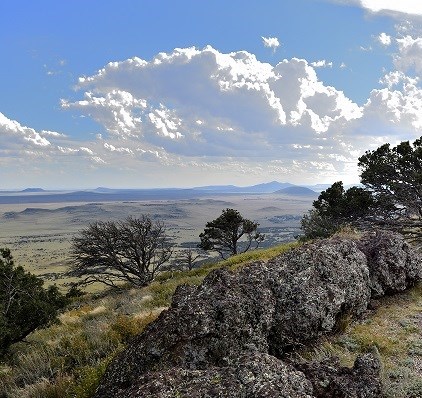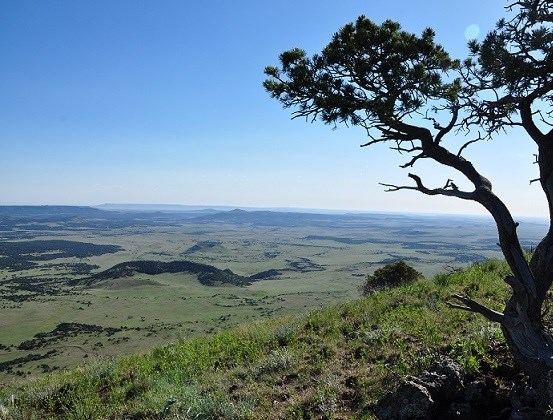
NPS Photo/Tim Keller The first volcanic eruptions in the Raton-Clayton Volcanic Field happened around 9 million years ago in the western portion of the volcanic field during what is known as the Raton phase of eruptions. The Raton phase lasted from around 9 million years ago to around 3.5 million years ago and consisted mainly of basaltic lava flows that formed the mesas near Raton, NM and the Red Mountain Rhyodacite that formed highly eroded volcanic domes. Some examples of volcanoes and lava flows that erupted during the Raton phase include Johnson Mesa, Fishers Peak Mesa, Mesa de Maya or Black Mesa, Red Mountain, the Pine Buttes, Palo Blanco Mountain, and Laughlin Peak. After the Raton phase of eruptions, the volcanic field was dormant for around half a million years until volcanoes started erupting in the eastern portion of the RCVF during what is known as the Clayton phase of eruptions. The Clayton phase lasted from around 3 million years ago to around 2.25 million years ago and eruptions that happened during this period consisted of the highest volume of magma erupted during the different phases of volcanic activity in this area. Most of the eruptions consisted of basaltic cinder cones and lava flows and Basanite cinder cones, such as Rabbit Ear Mountain, Mount Dora, Mount Clayton, Jose Butte, and Robinson Peak. However, the eruption of Sierra Grande also happened during the Clayton phase. An unusual volcano, Sierra Grande consists of andesite lava flows and is the only volcano that erupted andesite in this area. 
NPS Photo Despite the fact that the volcanic activity here has been paused for around 30,000 years, other geologic activity is still ongoing in the area. The slow weathering and erosion of the volcanoes in northeastern New Mexico is constant and can be seen in the furrows or 'wrinkles' extending down the sides of the volcanoes here. Capulin Volcano itself is estimated to have lost around 100 feet of elevation in the 60,000 years since the eruption built the cinder cone. To learn more about Capulin Volcano geologic activity, Rock On, Mother Earth! Episode 1 Capulin Volcano: How Tall is Your Imagination? ReferencesStroud, Joseph R., 1996. The Volcanic History and Landscape Evolution of the Raton-Clayton Volcanic Field: Masters Thesis. New Mexico Institute of Mining and Technology, Socorro, NM. |
Last updated: April 24, 2025
